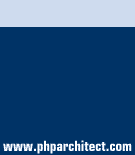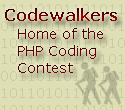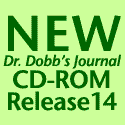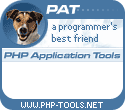Jeremy Zawodny
PHP and MySQL are the dynamic duo of Open Source tools for building dynamic and interactive web sites. But what happens when your site get slashdotted and suddenly needs to handle a few million visitors per day? Jeremy will discuss application design and optimization techiniques, MySQL server tuning tools, as well as some architectural issues.
Luke Welling
Laura Thomson
Common printable document formats in use today include Adobe's Portable Document Format (PDF) and Microsoft Word (DOC or RTF). A dynamic HTML document is easily generated using PHP but for applications such as providing a paper form or generating legal documents, letters, or certificates HTML has important limitations. Generating RTFs and PDFs from PHP is more complicated than generating HTML, but can add significant value to a web site.
Outline:
- The strengths and weaknesses of using alternative document formats
- Technical details of these formats
- How to use PHP's string processing functions to integrate a template with a user's data to create a rich text format (RTF) document.
- How to use a similar approach (but using regular expressions) to generate a Portable Document Format (PDF) document
- How to use PHP's PDFlib functions to generate a PDF document
- Comparison of approaches
Dan Radigan
Have you ever wanted to build web applications quickly and efficiently, but not sure where to start? Are you just making the transitions into web application development using PHP? Welcome to Rapid Application Development with Dreamweaver MX. We'll focus in on how to build web apps more efficiently using both the design and code features of Dreamweaver MX. We'll touch on extending Dreamweaver with HTML, JavaScript, and XML to customize Dreamweaver to meet your needs.
J. Scott Johnson
Abstract pending.
Shane Caraveo
Consume, Create, and Host Web services using PHP and PEAR SOAP. This tutorial will cover the basics of using the SOAP classes in PEAR ("PHP Extension and Application Repository") to consume and create Web Services. An introduction to SOAP and SOAP related technologies will be followed by coverage of the PEAR::SOAP and PHP-SOAP libraries.
John Coggeshall
Although there isn't much PHP can't do these days, there is a lot of
software out there that is in use written in other languages such as Java
or COM. Fortunately, just because something was written in Java or COM
doesn't mean you'll need a ASP server running to put it on the web. Learn
how PHP can be used to seamlessly web-ize applications developed with these
technologies, or give added power of PHP to offline applications.
Rasmus Lerdorf
Abstract pending
Christian Wenz
Microsoft's .NET strategy, revealed at the beginning of 2002, heavily relies on Web Services, so Web Services support in ASP.NET is really strong. PHP does not come with built-in functionality for easy Web Service access. Can PEAR close this gap, one year after the release of .NET?
Michael Radwin, Yahoo!
Abstract Pending
Zak Greant, MySQL
Speaker to be named
Abstract Pending
Sterling Hughes
Abstract Pending
George Schlossnagle
Abstract Pending
Andrei Zemiski
Abstract Pending
Jim Winstead
This talk will cover how to get involved in PHP development both at the coding and human levels -- how the source is structured, and how the community is structured.
By the end of the session, you'll not only know how to add new functionality to PHP through C code, but know how to share your code with your peers and get involved in the ongoing development of the PHP platform.
Luke Welling
Laura Thomson
Abstract Pending
Shane Caraveo
Abstract Pending
J. Scott Johnson
Abstract Pending
Chris Hubbard, PHP Book Author
Abstract Pending
Zak Greant, MySQL Community Advocate
Abstract Pending
George Schlossnagle, OmniTI
Abstract Pending.
| 




















